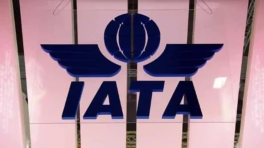NFTs in video games bring laundered money and angry players
Rushing to further monetise gaming adds to global social and environmental risk

Video games are, we've been told many times, bad for the kids—and maybe for the grown-ups, too. The first moral panic about video games traces back to fears in the 1970s, but very few of the subsequent claims have been supported by data. Rather, the most damaging aspects of video games stem from the way they are designed, whether to deceive players about how much money they spend, or as a backdoor for advertising harmful products like cigarettes. And a big change in how game finances work might just be happening, thanks to technologies such as NFTs and the blockchain.
The recent explosion of non-fungible tokens, or NFTs, to trade files in speculative marketplaces is inspiring many in the industry to adopt the technology for some innovative changes to how they—and their players—can make money. But this adoption raises serious policy dilemmas that need to be discussed and challenged now, while the technology is still in its infancy.
Game publishers see this technology as an opportunity to further build out their in-game marketplaces because of a long-term shift toward treating video games as a service, rather than as a discrete product purchased a single time. Instead of buying a game once, you either subscribe to it—a model pioneered by World of Warcraft and other massively multiplayer online games—or the game effectively sets itself up as a shopping mall.
Fortnite, for instance, is free to play, but its 350 million registered players are encouraged to make small payments in exchange for in-game items, like costumes or unique weapons. These are not always direct purchases; many items are concealed behind an in-game currency players can only buy in bulk with real money, or within purchasable loot boxes that introduce weighted dice rolls to determine the item inside. These systems make it harder for players to notice how much money they spend in the game. (I have called this dynamic "hypermonetisation" to underscore that it is an extreme practice.)
An NFT is a digital collectible: Think of a rare baseball card or postage stamp. However, while a baseball card's rarity is the result of the player's significance and influenced by its production run, an NFT's rarity is driven by math. In short: A hash, or the product of a complex math problem, is used to establish who owns that token. It is non-fungible because that exact math problem establishing ownership cannot be easily duplicated, even if the item the NFT represents can. There is no inherent value to NFTs—new ones can be "minted," or generated, all the time, even for the same digital file—so the value of NFTs can fluctuate wildly.
When it comes to video games, NFTs hold the promise of creating unique in-game items that may be ultrapowerful or simply rare, inducing demand for players to purchase and trade them. Many boosters promise NFTs can make in-game items independent of the game, so you could take a unique weapon purchased in Halo Infinite and use it in Call of Duty, but the technological reality of building such a system is difficult. (Wired produced a detailed explainer on why.)
The first effort to base a game on the exchange of NFTs was a 2015 project called Etheria. Styled like a digital version of the board game Settlers of Catan, Etheria was designed around a virtual world where players vie to control hexagonal pieces of land represented by NFTs minted on the Ethereum blockchain—an early experiment with creating a metaverse. They would do this by selling plots of land as NFTs, like digital title deeds that use cryptographic puzzles instead of a notarized certificate to establish ownership. However, the game fizzled out—each plot of land cost 1 ethereum to purchase, which at the time (ethereum launched in 2015, just before the game) was less than $1. While the price constantly fluctuates, 1 ethereum in 2022 costs around $3,000. The game simply could not scale with prices shooting skyward so quickly.
Yet the fluctuating value of NFTs offers a clue as to why game publishers want them so badly even as their audience is rejecting them: engagement. The "games as a service" approach is popular because it keeps players in the game longer than more traditional designs, and the longer they are in the game the more likely they are to spend money on items. Since the average gamer spends 8.5 hours playing each week, there is a powerful incentive to monetize every moment.
As hypermonetised service games become common, a new play style is emerging: pay-to-win, where you must buy items, abilities, or characters in order to be a competitive player. Perhaps understandably, pay-to-win games have generated extremely negative responses from players. Adding a layer of NFTs on top of pay-to-win games should, in theory, make unique in-game items appreciate, in a model called play-to-earn. Play-to-earn players should receive financial rewards for playing a game through the appreciating value of cryptocurrency and NFTs. Thus, the more players play, the more money they earn.
There are some early successes. Sky Mavis, a game developer valued at nearly $3 billion, makes a popular NFT game called Axie Infinity. Yet the popularity of this game, which generated over $700 million in revenue last year, also made it a target for hackers who managed to steal $625 million from the game's blockchain. Digital assets like NFTs are an innovative way to use security to back up game monetization and provide some extra collectability for players. But that only works if the system is actually secure. And that some NFT games might generate positive revenue for the players, as Axie does, is an intriguing prospect. But it can sound more like a job than a game. And, just like most jobs, it has some serious downsides with global implications.
One of the chief concerns is environmental. Ethereum, still the main service used to back NFTs in games, belches the same amount of carbon dioxide into the atmosphere each year as the entire country of Libya. The result of this widespread environmental damage is a growing urgency to regulate mining blockchains, whether in the United States, the European Union, or even China.
But beyond the energy concerns there are a host of problems around NFTs that policymakers need to take on. For starters, there is a broad misconception that purchasing an NFT is the same as purchasing an object. Consider the challenge of NFT theft, where hackers can trick NFT holders into giving away their token without payment—the decentralised nature of some NFT marketplaces makes finding a legal way to prosecute or make restitution for such theft impossible.
A legal regime to safeguard NFT ownership rights would violate this decentralised ethos, as it would negate the purpose of the blockchain by duplicating the current, effective system of legal ownership for digital goods, like the U.S. Copyright Office. This is in addition to the obviously centralised nature of NFT marketplaces, which exist because without them finding items in a global network would be virtually impossible.
Any legitimate NFT marketplace will have the same centralised system of rules, limitations, and enforcement as any other marketplace so as to guarantee the safety of transactions. But if an NFT marketplace is operating according to central rules, how can it also be called "decentralised?" And whenever digital items are stored centrally, the risk of catastrophic loss through hacking rises.
From a regulatory perspective, it seems clear that NFT gaming will be neither decentralised nor safe from compromise—the way liability and reporting mechanisms work mean there will be a single point of failure baked into the system, subject to the preferences of the game publisher and local laws, the latter of which is what theft victims rely on to try to recover their stolen assets. Established game-makers have encountered scams with their marketplaces; in 2019, the game publisher Valve found scammers using its own loot boxes to launder money, and it has banned NFTs from its stores.
Malignant actors using multiplayer online games to launder money is nothing new—nearly 15 years ago, when I worked as a defense contractor, I investigated early online games such as World of Warcraft to see if they were being used for terrorist financing. They weren't, but plenty of people used the game currencies to shift money across borders without going through banks. Most game publishers put in place systems to catch that, but a shift to NFTs makes monitoring illicit transfers of money difficult—maybe too difficult to make it truly worth implementing.
NFTs also raise the specter of more long-term social problems. While gaming addiction is probably not real, gambling addiction is. A primary worry with hypermonetised games is how their design seems to trigger the same psychological processes as addictive gambling—one reason why some games rely on "whales," a term borrowed from gambling to describe an individual player who spends an extreme amount of money.
For example, the mobile game Candy Crush makes around $4.6 million in revenue each day, but most of that revenue comes from a very small number of people who sometimes spend thousands of dollars per day playing the game. Since cryptocurrency has no stable value, many of the same cognitive patterns that suck people into gambling also suck them into trading cryptocurrency and NFTs. As a result, now psychologists worry about "crypto addicts" losing the ability to practice self-control when they buy and sell digital assets that could, tomorrow, suddenly be worth nothing.
This is a more immediate problem than you might think. Russia is the 15th-biggest market for video games worldwide, and the biggest game companies in the world have frozen out Russian players. Twitch will not pay Russian streamers, Nintendo shut down its eShop in Russia, and Microsoft froze sales. There is clearly an awareness of symbolic activity in the industry to signal that these companies take sides on some issues. At the same time, Ukraine has been fundraising its self-defence efforts using many of the same streams Russia is using to stay afloat economically. Games based on NFTs use these same marketplaces, blockchain, and wallet systems to handle transactions, but the industry still seems unprepared to address the complicated politics that accompany cryptocurrencies—and cryptocurrency advocates themselves have been extremely reluctant to boycott Russia.
That being said, from a player's point of view, NFTs and blockchain gaming remain deeply unpopular, at least if gamers are asked to purchase NFTs through a game marketplace. When Ubisoft tried introducing a new NFT system for its games, called Quartz, it was so unpopular the company canceled it after just a few months. But that hasn't stopped Ubisoft from trying. One of its chief strategists said gamers rejecting NFTs "don't get it" and explained how they should be excited about the idea of selling all of one's in-game items for "money" in a secondary market after they're done playing. The CEO of the Japanese game company Square Enix recently made similar comments, going so far as to imply that playing video games for fun is an outdated idea.
A key throughline for this dogged insistence from company executives is that, however hated NFTs are by players right now, in the long run it is central to these companies' monetization plans. Hypermonetised microtransaction-based games have become so good at tricking players into spending money they are facing intrusive regulations globally; should that business model become restricted through regulations or law, NFTs offer a way for these same companies to keep the revenue from treating their games as a service flowing inward. If they can create a play-to-earn game that is less volatile than Axie Infinity and has a larger player base, then they would have real sustaining revenue from an individual game.
But that just isn't good for players or for the environment. Watching corporate executives force an unwanted payment model on their customer base to grow their margin is hardly a new dynamic—a similar debate accompanied the rise of microtransactions in games. But, while microtransactions can prove ruinous for the player who is unable to stop compulsive purchases in a maliciously designed game, NFTs can prove ruinous more broadly for the workplace and for the environment.
NFTs in games are not going away. A recent poll found 56 percent of gamers who have heard of NFTs are at least open to the idea of earning them for playing a game, for example. And obviously game-makers are not giving up on the idea. But passively earning an investment instrument as a reward for playing is different from having sections of the game locked behind an NFT purchase, which forces players to participate in an economy they do not want to. The needs and interests of players are being pushed aside in the name of an ill-planned, rapacious gold rush to cash out on a trend. If game companies placed player interests first and built their NFT systems in a way that supported play instead of disrupting it, they might not have faced such severe backlash.

Joshua Foust is a Ph.D student at the University of Colorado Boulder studying strategic communication.
Disclaimer: This article first appeared on Foreign Policy, and is published by special syndication arrangement.


 Keep updated, follow The Business Standard's Google news channel
Keep updated, follow The Business Standard's Google news channel
















